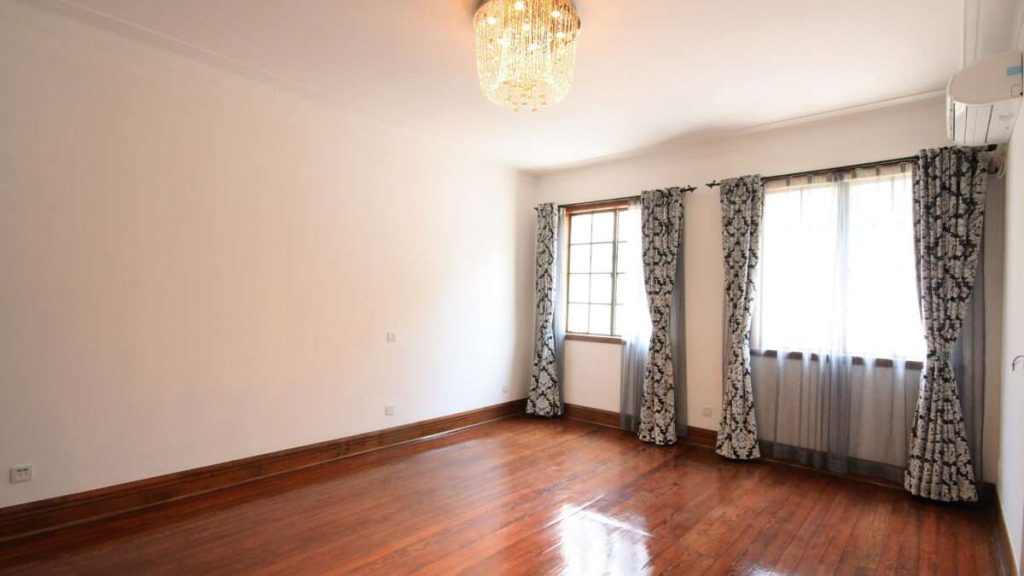Happy Tuesday and welcome to another edition of Rent Free. This week’s stories include:
A new meta-analysis of rent control studies finds that caps on rents lower rents…along with housing supply and housing quality. A California program to build tiny homes for the homeless produces even tinier results. Cleveland, Ohio, is the latest city to consider a crackdown on short-term rentals.
But first, our lead story about the researchers in the United Kingdom who make the audacious argument that the country doesn’t need to build more housing, it just needs to redistribute its glut of spare bedrooms.
How Many Bedrooms Does One Need Anyway?
Much of the developed world—and the developed, English-speaking world in particular—suffers from high housing costs born of low rates of home-building. The most immediate reason for this is zoning and planning regulations that limit how much new housing can be built.
The situation is particularly dire in the United Kingdom, where every housing project effectively needs the discretionary approval of local bureaucrats and greenbelts flatly prohibit new residential development on the fringe of existing urban areas.
As a result, regions like England have higher median housing costs than the United States, despite having lower incomes and smaller homes.
‘Need’ vs. ‘Want’
Yet, in a paper published by the London School of Economics’ Centre for Analysis of Social Exclusion (CASE), researchers argue that the U.K.’s housing shortage is a mirage created by bad accounting and excess tolerance of people’s luxurious housing “wants.”
In their March-published paper (and more recent blog post published last week), these researchers argue if one counts not the number of housing units but rather the number of individual bedrooms, the country has all the housing it needs.
The real problem, they say, isn’t that the country isn’t building enough housing. Rather, it’s that too many bedrooms are being hoarded by homeowners who don’t really need them.
Researchers establish a “bedroom standard” whereby a household’s housing needs are sufficiently met when they have one bedroom per single adult, couple, or child over nine years old. Households are also allotted a single “spare bedroom” as a matter of basic creature comfort.
In England, necessary bedrooms plus an additional acceptable spare bedroom account for about 80 percent of all bedrooms. Another 17.4 percent of English bedrooms are luxurious second “spare” bedrooms that serve a housing want, but not an actual housing “need.”
Researchers note that these second spare bedrooms—whether they be an occasionally used guest room or bedroom occupied by a single young child—easily outnumber the bedrooms needed by overcrowded households or the homeless.
Rather than expend resources and carbon emissions to build more homes, the CASE paper’s authors argue that the climate-smart move would be to adopt policies that curb excess demand in the service of more “efficient” use of existing bedrooms.
Reshuffling Bedrooms
A critic might say that this “bedroom” standard seems to misunderstand how homes actually work. Unlike fungible units of currency or divisible units of food and clothing, there’s some hard physical limits on redistributing bedrooms from the haves to the have-nots.
Families also typically like to live together in their own homes without the presence of strangers. Moving members of overcrowded households, or even the homeless, into the spare bedrooms of “under-occupied” homes would likely cause some legal and social friction.
The authors of the CASE paper candidly acknowledge these practical difficulties of redistributing bedrooms.
They do half-heartedly suggest taxing “excess” floor space and housing while conceding such taxes could merely force lower-income people to sell their homes and force others into “resource-efficient but involuntary and potentially abusive sharing arrangements.”
Instead, their paper looks more positively at policies that strike at the heart of the problem: private property rights. They propose limiting the amount of time people could own their own homes and compulsory government purchases of “under-occupied” housing.
The Dead End of Anti-Growth Housing Policy
One has to give credit to the CASE paper’s authors for fearlessly taking the anti-growth mindset on housing to its logical conclusion.
In housing policy discussions, critics of new supply will inevitably argue that the real problem is that there’s just too much demand for housing.
Those who blame “excess demand” for high housing costs will typically single out sources of demand they consider illegitimate and worthy of restrictions—Airbnb, wealthy gentrifiers, immigrants, Wall Street investors, and so on.
The absolute dearth of supply in the U.K. makes it a little harder to beat up on these typical scapegoats. The CASE paper is thus left blaming the excess demand of ordinary homeowners indulging in the unspeakable luxury of having a spare bedroom or spoiling their younger children with bedrooms of their own.
But rather than throwing out private property rights in an effort to eliminate spare bedrooms, it would seem to be a lot easier to embrace the private property right to just build new homes.
This would allow current homeowners to guiltlessly keep their spare bedrooms while people currently in overcrowded housing could move into all the new, more spacious homes being built.
The free market typically does a good job of matching supply and demand, even when a lot of that demand comes from people’s excess “wants.” If it were easier to redevelop existing homes into more units, one could easily imagine “empty-nesters” selling off their homes to apartment developers.
That would seem a more sane, simple, and mutually beneficial solution than having government bureaucrats shuffle around existing bedrooms to those who deserve them the most.
Rent Control’s Results Are In
When supply-side critics aren’t busy counting bedrooms, they’re often looking to reduce housing costs by adopting rent control.
Proponents of rent control argue that capping rents is an easy and direct means of lowering housing costs for existing tenants.
Critics of rent control have long argued that capping rents leads to lower overall housing supply (by reducing developers’ incentive to build) and lower housing quality (by reducing owners’ incentive to maintain existing housing stock).
In a recent paper, German researcher Konstantin A. Kholodilin looks at hundreds of papers on the effects of rent control. His predictable conclusion is that, basically, everyone is right.
“Rent control appears to be very effective in achieving lower rents for families in controlled units, its primary goal,” writes Kholodilin. But he says, the policy “also results in a number of undesired effects, including, among others, higher rents for uncontrolled units, lower mobility and reduced residential construction.”
Kholodilin’s paper is ambivalent about the trade off between rent control’s costs and benefits, saying that “the overall impact of rent control policy on the welfare of society is not clear.”
The important takeaway is that this is a trade-off no one needs to make.
One could get all the benefits of rent control, without any of the costs, by removing regulatory restrictions on new supply. The additional building would lower prices. The new housing would also generally be of higher quality than the older, deteriorating housing stock it would replace.
Tiny Homes, Minimal Results
Back in March 2023, California Gov. Gavin Newsom launched a new program whereby the state would ship 1,200 manufactured tiny homes to four cities around the state to serve as homeless housing. The idea was to quickly, and cheaply, get people out of tent encampments and into actual, serviceable shelters.
Last week, CalMatters reporter Marisa Kendal followed up on the program’s results. They’re not encouraging.
Thus far, no new tiny homes have been installed. And only 150 have been ordered thus far. The program’s failure is multifaceted, reports Kendal. The state changed the design of its program, delaying the delivery of new units. Local governments delayed things further by demanding the most expensive forms of tiny homes and blocking their actual installation at possible sites.
It’s yet another example of how even when the government is trying to solve a government-created housing crisis, it can’t seem to get out of its own way.
Cleveland Mulls a Crackdown on Short-term Rentals
Los Angeles and New York City have both adopted restrictive policies on short-term rentals in recent years, even as they look to restrict new hotel construction. Now Cleveland, Ohio, is looking to get in on the action.
The Cleveland Scene reports on a new proposed ordinance that would effectively ban property owners from renting out units and bedrooms for more than thirty days on short-term rental platforms like Airbnb and VRBO.
The ordinance would also slap a lot of additional restrictions on shorter-term short-term rentals. Reports the Scene:
All short-term rentals, even those spare guest room beds, would need to be licensed, with proof of payments for real estate taxes, a lease agreement and a floor plan detailing “emergency evacuation.” (And proof of at least $300,000 in liability insurance.) Without a license, that rental couldn’t be advertised—not on Airbnb, Vrbo, or elsewhere.
Quick Links
Massachusetts Attorney General Andrea Campbell is staffing up a new Housing Affordability Unit, partially tasked with enforcing a state law that requires localities to zone for apartments near transit stops. Campbell has already sued the town of Milton for refusing to comply with the law. At Works In Progress, Anya Martin writes about gentrification as a symptom of restrictions on housing supply. San Francisco’s most famous “meme project”—a proposed 50-story tower in the Sunset district—is dead. Project sponsors are proposing to go forward with something less ambitious, reports the San Francisco Chronicle. Cincinnati, Ohio, is moving forward with a zoning overhaul that would allow more “missing middle” housing types—like duplexes, triplexes, and townhomes—in some low-density neighborhoods near transit. The “Connected Communities” plan received approval from the city’s planning commission earlier this month. It now goes to the city council for final approval. Sen. Amy Klobuchar (D–Minn.) is the latest politician to call for greater regulation of “hedge funds and private” investors purchasing homes. Large institutional investors are a tiny fraction of home buyers. If anything, we should want them to be buying more homes.
The post The Rise of the Bedroom Counters appeared first on Reason.com.







